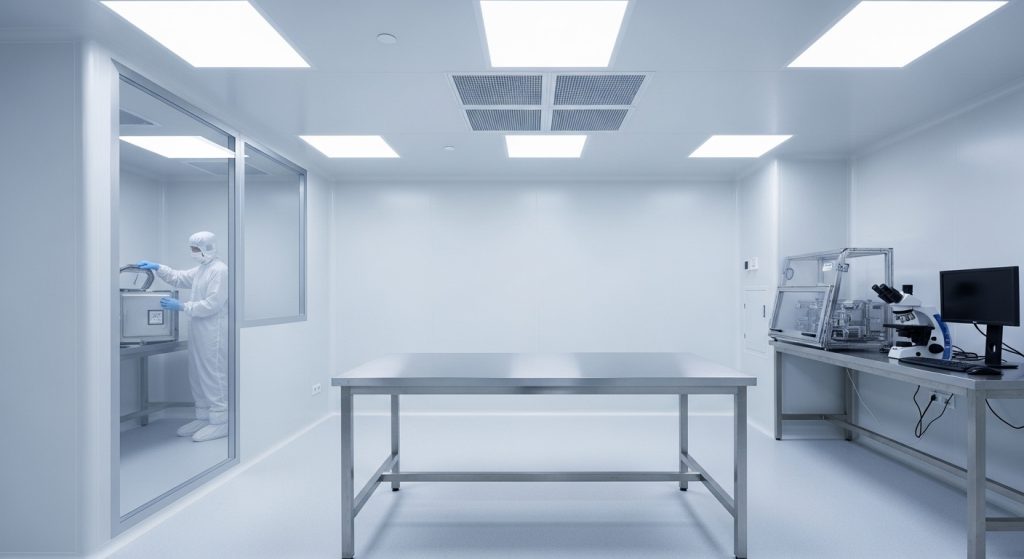In today’s fast-paced and technology-driven world, maintaining environments free from contaminants has become essential for several industries. A Clean room is a controlled space designed to limit airborne particles, microbes, chemical vapors, and other pollutants that can compromise sensitive processes. These specialized environments are the backbone of industries like pharmaceuticals, biotechnology, healthcare, and electronics, where even the smallest impurity can affect product safety, performance, or research outcomes.
What is a Clean Room?
A clean room is a highly controlled environment where temperature, humidity, air pressure, and contamination levels are continuously regulated. Unlike ordinary rooms, a clean room uses advanced systems such as HEPA (High-Efficiency Particulate Air) or ULPA (Ultra-Low Particulate Air) filters to remove unwanted particles from the air. The classification of a clean room is determined by international standards such as ISO 14644, which specifies the maximum allowable concentration of particles per cubic meter of air.
The purpose of a Clean room is to ensure that products, research, or experiments remain free from contamination that could compromise their integrity. These environments also provide protection for employees working with hazardous or delicate materials.
Key Features of a Clean Room
- Air Filtration Systems
HEPA and ULPA filters eliminate airborne particles, ensuring clean air circulation. Laminar airflow systems direct filtered air in a consistent pattern, minimizing turbulence. - Pressure Control
Clean rooms are often maintained at a positive pressure relative to surrounding areas. This ensures that when doors are opened, contaminants flow out rather than in. - Specialized Materials
Surfaces inside a clean room are smooth, non-porous, and easy to disinfect. Walls, ceilings, and flooring are made of materials that do not shed particles and are resistant to chemical cleaning. - Personnel Protocols
Workers entering clean rooms must wear specialized garments such as gowns, gloves, shoe covers, and masks. Gowning rooms and air showers are often part of the entry process to minimize contamination. - Environmental Monitoring
Sensors and systems track temperature, humidity, and particle levels in real time, ensuring the clean room meets required standards.
Applications of Clean Rooms
- Pharmaceutical Industry
Clean rooms are vital in drug development and production. Medicines, vaccines, and injectables require sterile conditions to prevent contamination that could affect patient safety. - Biotechnology and Research
Laboratories conducting genetic engineering, microbiology, and molecular research depend on clean rooms to produce consistent and reliable results. - Medical Devices
The production of implants, surgical instruments, and diagnostic equipment must take place in clean environments to ensure patient safety and regulatory compliance. - Electronics and Semiconductors
The electronics industry relies heavily on clean rooms. A single microscopic particle can damage microchips or circuits, making contamination control critical for semiconductor manufacturing. - Food and Beverage Industry
Clean rooms are used for microbiological testing and in processes where sterility is essential to ensure safe food products.
Benefits of Clean Rooms
- Product Quality and Safety
By minimizing contamination, clean rooms guarantee the integrity of medicines, electronics, and other sensitive products. - Regulatory Compliance
Clean rooms help organizations meet international standards and certifications, such as GMP (Good Manufacturing Practices) and ISO guidelines. - Operational Efficiency
Clean environments reduce production errors, minimize waste, and lower the risk of product recalls. - Protection of Personnel
In cases where employees work with hazardous materials, clean rooms provide an added layer of protection. - Customer Trust
Companies that invest in clean room technology demonstrate a commitment to safety and quality, strengthening their brand reputation.
Future Trends in Clean Room Technology
The demand for clean rooms is increasing as industries continue to evolve. Some of the most notable trends include:
- Automation and Robotics: Reducing human involvement helps limit contamination risks, as robots can handle material transfer and repetitive tasks more effectively.
- AI-Driven Monitoring: Artificial intelligence systems are being used to monitor and predict contamination risks, ensuring proactive quality control.
- Modular Clean Rooms: Flexible, scalable, and cost-effective modular designs are becoming popular, allowing organizations to expand their facilities as needed.
- Sustainable Solutions: Energy-efficient HVAC systems and eco-friendly construction materials are now integrated into clean room design to reduce environmental impact.
Conclusion
A Clean room is more than just a sterile environment—it is the cornerstone of innovation, safety, and reliability in multiple industries. From pharmaceuticals and biotechnology to electronics and food production, clean rooms ensure that processes remain contamination-free, products meet global standards, and consumers receive safe and effective outcomes.
As technology advances, the role of clean rooms will only grow stronger, with smarter monitoring systems, greater automation, and sustainable design leading the way. Investing in clean room infrastructure is not only a business necessity but also a commitment to excellence, innovation, and global progress.


